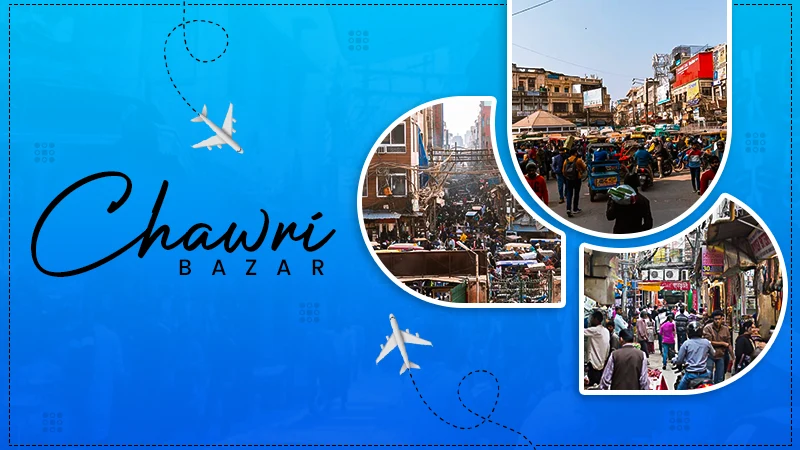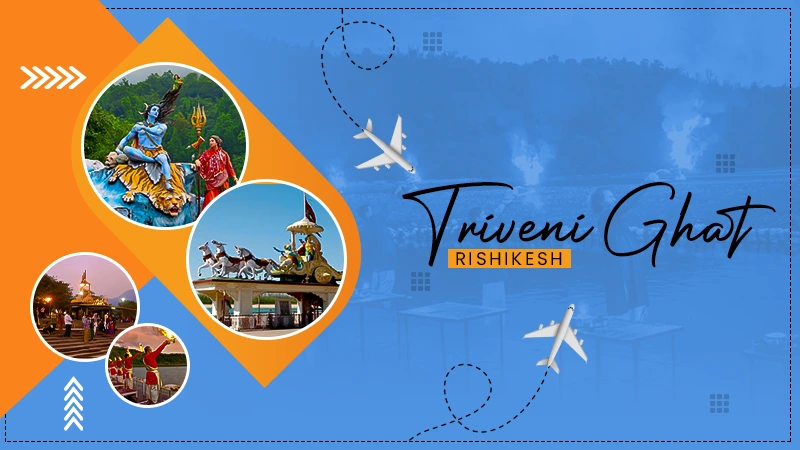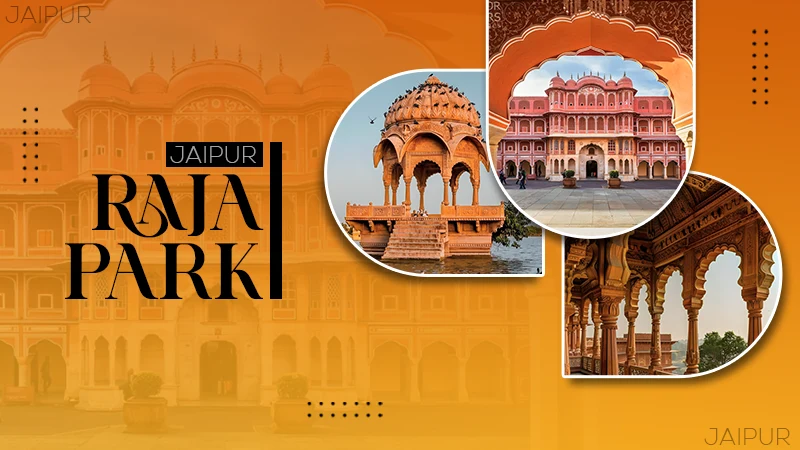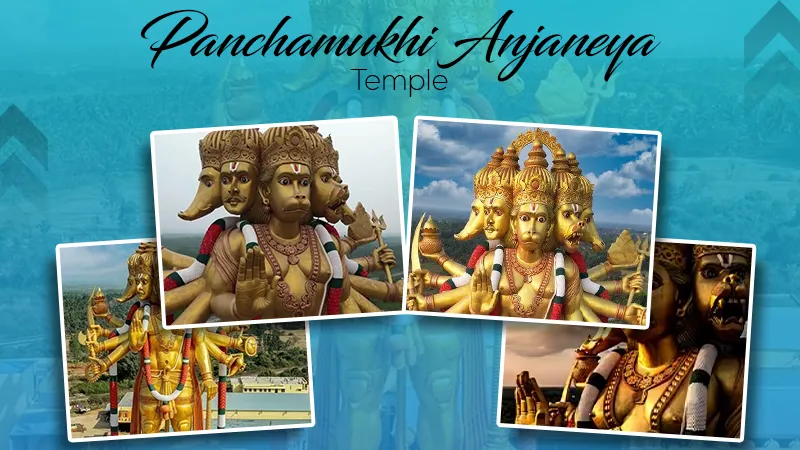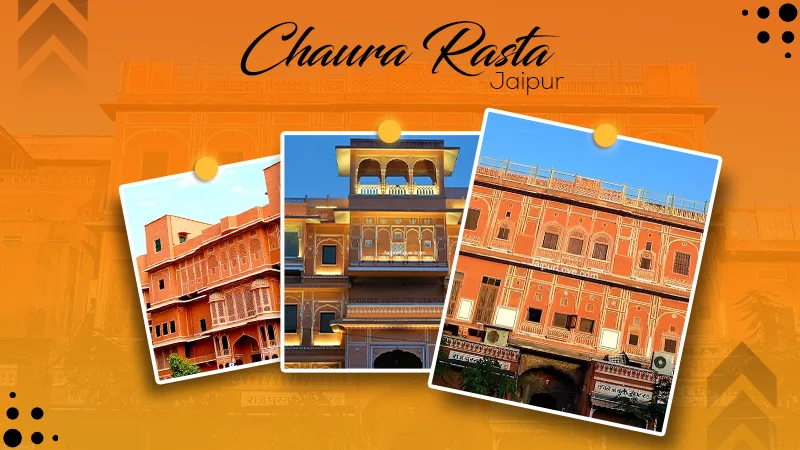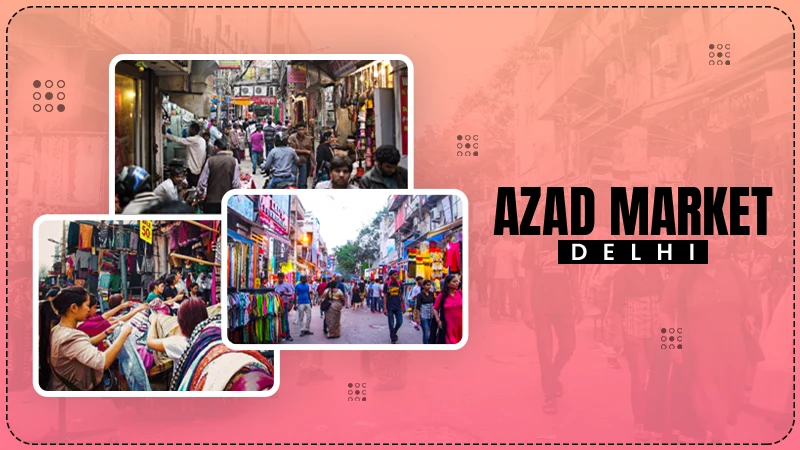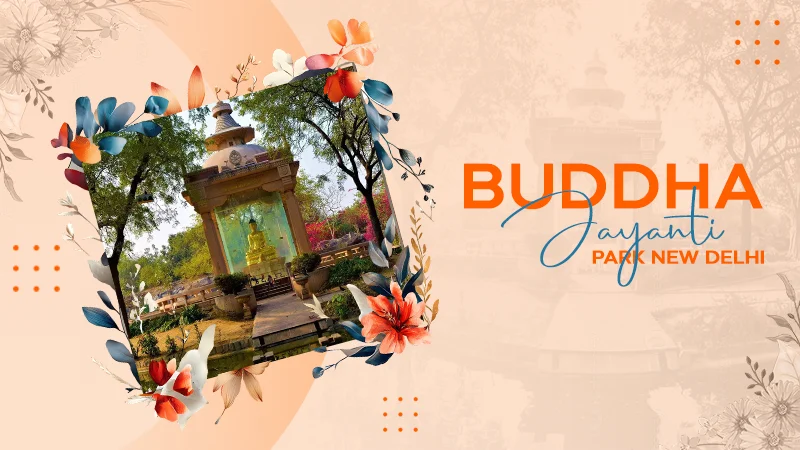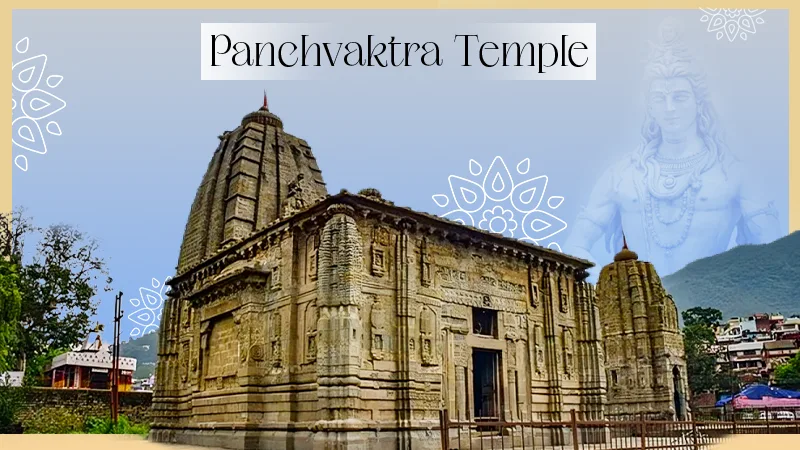
The Panchvaktra Temple, located at the meeting point of the Suketi and Beas rivers in Mandi, Himachal Pradesh, draws many tourists from all over the nation because of its surreal beauty.
It’s one of the most popular destinations in Mandi, maintained by the Archaeological Survey of India, and is also one of the oldest and most popular temples dedicated to Lord Shiva.
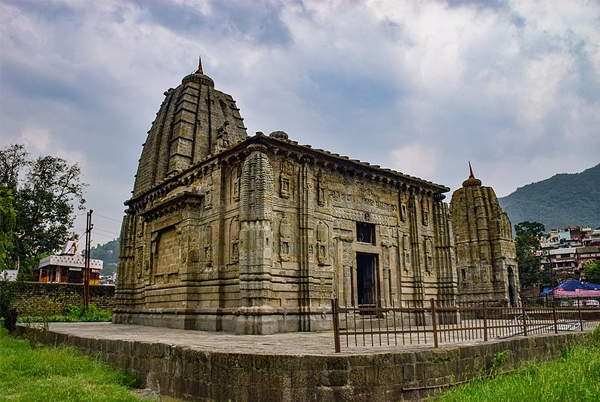
Panchvaktra Temple is constructed in the stunning traditional Shikhara architectural style. The temple’s name comes from the statue of Lord Shiva, which has five faces, but only three are visible from the front.
If you’re seeking a holy refuge in the embrace of Lord Shiva and want to pay a visit to Panchvaktra Temple, here’s the ultimate travel guide you need.
About Mandi: A Gateway to Himachal Pradesh’s Hidden Treasures
Hidden in the land of the Himalayas, Mandi is a spiritual hub with many temples and places to visit. Recognized for its spiritual significance, it’s a well-loved tourist destination for its tranquil beauty and rich cultural heritage.
The town is frequently referred to as the “Varanasi of Hills,” “Choti Kashi,” or “Kashi of Himachal” due to the 81 temples scattered throughout its territory.
Panchvaktra Temple is a shrine dedicated to Lord Shiva, the father of the universe. The temple rests on a sizable pedestal, and a giant shrine sits in the center, exuding a sense of calmness.
Why is Panchvaktra Temple Famous?
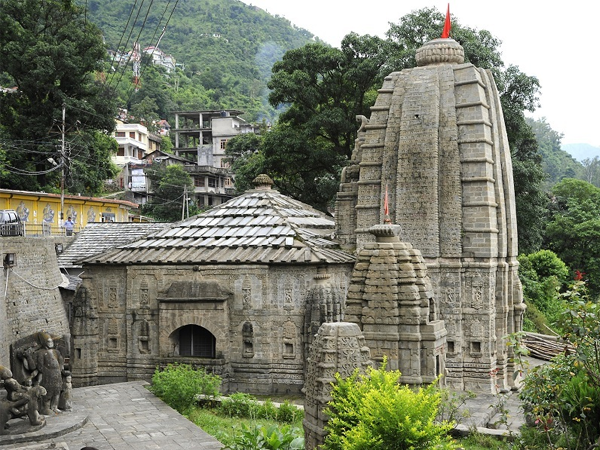
Panchvaktra Temple has been declared a site of national importance. It’s where one of Lord Shiva’s giant statues lies.
Aghora, Ishana, Tat Purusha, Vaamdeva, and Rudra are the five faces of the statue, each of which symbolizes a different facet of Lord Shiv. His creative and destructive side is Rudra; his feminine side is Vaamdeva; his ego is Tat Purusha; he is Ishana, the all-pervading and all-powerful; and his destructive nature is Angora. Panchvaktra is the name for this whole combination.
It’s a serene location, exuding tranquility. Those who practice quiet meditation here can benefit from excellent mental health and soul purification. Without a doubt, the Panchvaktra Mahadev temple is India’s esteemed legacy.
Panchvaktra Temple: How Does it Look From the Inside?
Now, we want you to imagine you are inside the temple. Here are the details of the history of the Panchvaktra temple.
One of the most striking aspects of the Panchvaktra temple is its intricate wooden carvings. These masterpieces adorn the temple’s beams, pillars, and entrances, showcasing a rich tapestry of patterns, motifs, and figures.
These carvings, which highlight the skilled work of the regional artisans, frequently feature scenes from mythology, gods, animals, and floral patterns.
The temple’s roof is especially remarkable. It gets its name from the five peaks, or “Panchvaktra,” that it has. The main structure’s peaks rise from it, making a striking silhouette against the sky.
The main temple honoring Bhagwan Shiva is part of the Panchvaktra Temple complex, including minor shrines and buildings. Usually encircled by a courtyard, the complex may also have other buildings, such as a hall for religious ceremonies or a road around which devotees might walk.
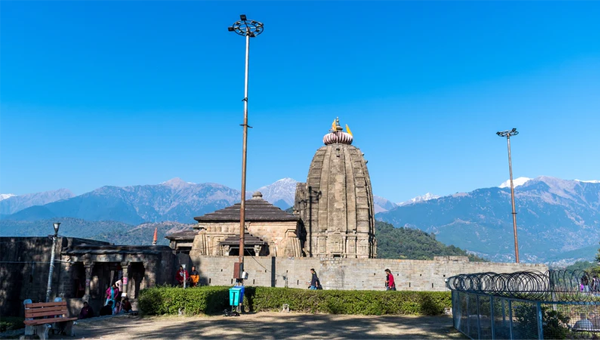
The Panchvaktra Temple is a revered place of worship for devotees of Bhagwan Shiva. Pilgrims from all corners of the country flock here to seek his blessings. It is believed that offering prayers at this temple can fulfill their wishes and desires. The grand celebration of Mahashivaratri is a testament to the temple’s religious significance.
Several local legends tell the tale behind this magnificent structure. It is thought that the Pandavas constructed the temple while they were in exile.
Devotees also believe that to obtain Lord Shiva’s hand in marriage, Goddess Parvati—a manifestation of Shakti—underwent severe penance and meditation. After years of devotion and worshiping, the two eventually tied the knot here.
Architecture of Panchvaktra
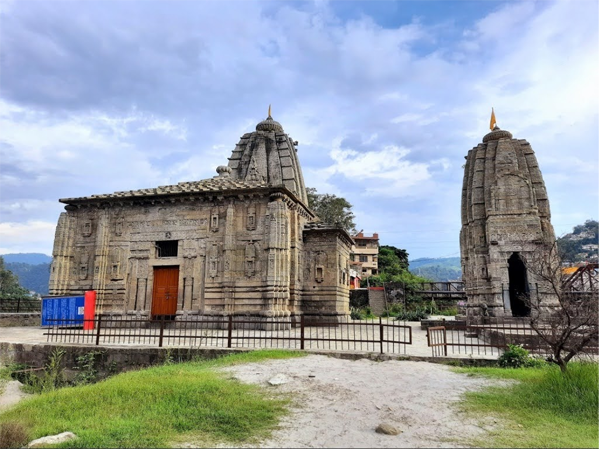
Panchvaktra Temple is a prime example of the unique Himachali architectural design. This design is renowned for its fine craftsmanship and beautiful woodwork. Most of the temple’s structure is made of stone and wood, reflecting the locals’ traditional building methods.
The temple’s most outstanding feature is its intricate wooden carvings. Its wooden beams, pillars, and entrances are all beautifully carved with elaborate patterns, motifs, and figures.
The intricate carvings, a testament to the skill of the regional artisans, are not just decorative elements but also bear cultural significance. They often depict scenes from mythology, gods, animals, and floral patterns, serving as a visual narrative of the region’s rich cultural heritage.
One of the most striking features of the temple is its roof, which is a visual marvel. The five summits, or ‘Panchvaktra,’ from which the temple derives its name, create a distinct silhouette against the sky, adding to its unique charm and architectural grandeur.
The Panchvaktra Temple complex is home to the primary shrine devoted to Bhagwan Shiva and a few other minor shrines and buildings. In addition to possible additions like a hall for religious ceremonies or a road for devotees to walk around, a courtyard usually encircles the complex.
Although stone is employed in building, wood makes up most of the temple’s architectural elements. Structurally, the temple is stable because of its stone pillars and walls.
Panchvaktra Temple Timings
Panchvaktra Temple, famous for its religious feel and aesthetic looks, opens its doors early at 6:00 am and the morning hours extend until 12:00 pm. So don’t worry, enough time is provided for rituals and prayers to be conducted.
After a brief midday closure, the temple reopens at 4:00 pm to welcome the evening visitors and let them participate in the evening aarti. It remains accessible until 8:00 pm. The flexible timing options accommodate early birds as well as the night owls who wish to find some peace and inspiration in this holy place.
How to Reach Panchvaktra Temple in Mandi?
Reaching the Panchvaktra Temple in Mandi is convenient, thanks to its central location and the availability of various transportation options. Here’s a guide on how to get there:
By Air:
The nearest airport to Mandi is the Bhuntar Airport in Kullu, which is approximately 60 kilometers away. From the airport, you can hire a taxi or take a bus to Mandi.
By Train:
The closest railway station to Mandi is in Joginder Nagar, around 55 kilometers away. From Joginder Nagar, you can take a taxi or a local bus to reach Mandi.
By Road:
Mandi is well-connected by road and can be easily accessed from major cities in Himachal Pradesh and neighboring states.
- From Delhi: Mandi is about 430 kilometers from Delhi. You can take a direct bus from Delhi ISBT to Mandi or drive via NH44.
- From Chandigarh: Mandi is approximately 200 kilometers from Chandigarh. Regular buses and taxis are available, and the drive via NH205 offers scenic views.
- Local Transport: The Panchvaktra Temple is located near the confluence of the Beas and Suketi rivers, close to the center of the town. You can easily reach the temple by local taxi, auto-rickshaw, or even on foot if you are staying nearby.
No matter how you choose to travel, reaching Panchvaktra Temple promises a journey through the beautiful landscapes of Himachal Pradesh, culminating in a visit to a site of immense cultural and spiritual significance.
Nearby Attractions
Panchvaktra Temple forms the core of Mandi’s tourism. However, its location is near many tourist hotspots, offering a blend of beauty, religious significance, and adventure opportunities.
We’ve rounded up the best 10 in the section below.
1. Bhootnath Temple
- Distance: Approximately 500 meters
- Significance: Dedicated to Lord Shiva, famous for its Shivaratri festival.
2. Rewalsar Lake
- Distance: Around 24 kilometers
- Significance: Sacred to Hindus, Sikhs, and Buddhists.
3. Pandoh Dam
- Distance: About 16 kilometers
- Significance: Part of the Beas Project for generating hydroelectric power.
4. Parashar Lake
- Distance: Approximately 50 kilometers
- Significance: A high-altitude lake with a floating island, surrounded by the Dhauladhar ranges.
5. Tarna Temple (Shyama Kali Temple)
- Distance: Around 2 kilometers
- Significance: Dedicated to Goddess Kali.
6. Sunken Garden
- Distance: Approximately 1 kilometer
- Significance: A popular spot in the heart of Mandi.
7. Barot Valley
- Distance: About 67 kilometers
- Significance: Known for its natural beauty and trout fishing.
8. Janjehli Valley
- Distance: Around 67 kilometers
- Significance: Ideal for adventure tourism.
9. Chindi (Karsog Valley)
- Distance: Approximately 94 kilometers
- Significance: Renowned for its apple orchards and scenic vistas.
10. Shikari Devi Temple
- Distance: About 85 kilometers
- Significance: An ancient temple dedicated to Goddess Shikari Devi.
Conclusion
The countless prayers of believers of all ages and backgrounds reverberate within its hallowed confines.
A trip to the Panchvaktra Temple is guaranteed to leave a lasting impression on your heart and soul, January is considered the best month to visit this place. Reaching this temple will be a timeless reminder of the enduring power of faith and devotion in the face of life’s many challenges.
Regardless of whether you are a devoted pilgrim seeking divine blessings or a curious traveler seeking spiritual enlightenment, you should visit Panchvaktra Temple.
How did the Panchvaktra Temple come to be?
The Panchvaktra temple’s founding date is still a mystery. Historical records state that the temple was repaired during the reign of Sidh Sen (1684–1727) after flooding had devastated it. Four intricately carved pillars support the temple’s main porch or Mandap.
The Panchbakhtar temple was built by who?
Raja Guje Singh of Jammu (1687–1703) built the temple, which is regarded as one of the city’s oldest.
What style does the Panchvaktra Temple have?
Located on a large platform, the Panchvaktra Temple is a magnificent shrine devoted to Lord Shiva. Its exquisite furnishings are designed to further elevate the pilgrims’ spiritual journey. The architectural wonder of the temple is its Shikhara style,


